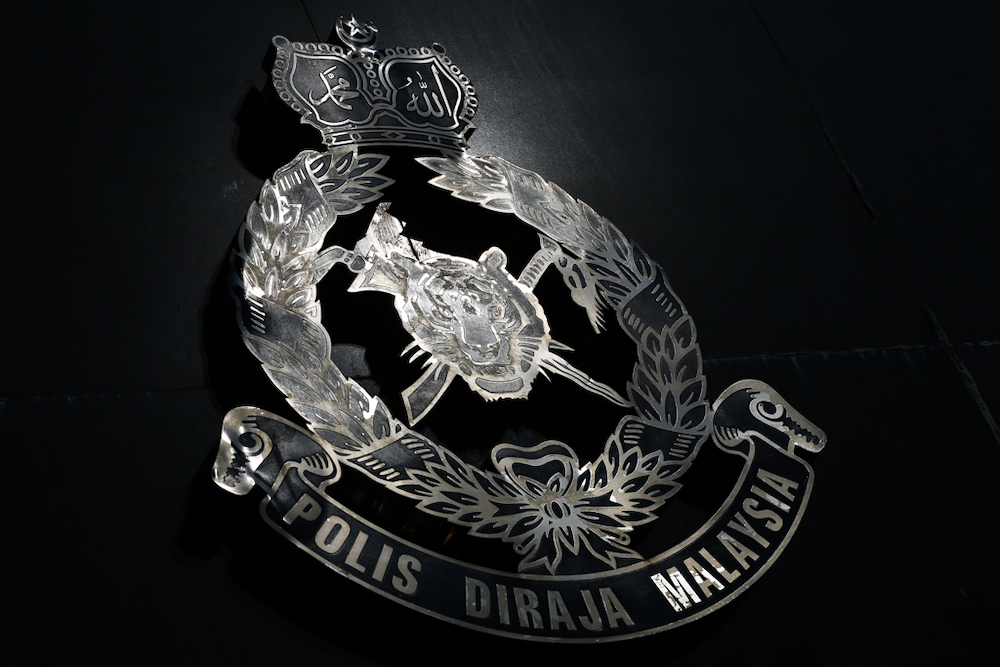ADVERTISE HERE
 The lion dance performers seek blessings after its awakening ceremony officiated by Wee (in blue shirt) at Lien Heng Wushu Association on Sept 5, 2024.
The lion dance performers seek blessings after its awakening ceremony officiated by Wee (in blue shirt) at Lien Heng Wushu Association on Sept 5, 2024.By Karen Bong
KUCHING, Sept 5: The centuries-old Chinese tradition and art of lion dance is bringing hope and inspiration to a diverse group of young people at Henry Gurney School Puncak Borneo, a rehabilitation and correctional facility for juvenile offenders.
Through the artistry, discipline, and cultural significance of the lion dance, youths from diverse ethnic backgrounds including Chinese, Dayak and Malay are finding hope and a renewed interest in learning and personal growth.
In a ceremony marking the adoption of the school’s lion dance team by the Lien Heng Wushu Association, eight students, brimming with enthusiasm, showcased their skills in front of their families and guests.
Dressed in the association’s sports attire, they impressed the audience with their performance, bringing the symbolic lion to life with fluid movements that matched the rhythmic beats of drums, cymbals, and gongs.
 The Henry Gurney School Puncak Borneo lion dance team in a photo with Wee (standing centre) and Chin (standing, fifth left) at Lien Heng Wushu Association on Sept 5, 2024.
The Henry Gurney School Puncak Borneo lion dance team in a photo with Wee (standing centre) and Chin (standing, fifth left) at Lien Heng Wushu Association on Sept 5, 2024. Lion heads on display at Lien Heng Wushu Association.
Lion heads on display at Lien Heng Wushu Association.Two students donned the lion costume, one controlling the head and the other managing the rear, as they animated the lion with head turns, eye blinks, and tail flicks.
The performance infused energy into the event, with the lion mimicking lifelike movements that captivated the audience.
More importantly, this team would be participating in a lion dance competition on Sept 21–22.
The ceremony, held at the association’s premises in Green Road, began with the traditional awakening of the lion, officiated by Kuching South City Council (MBKS) mayor Dato Wee Hong Seng.
Passing on Chinese culture: The unique soul of Sarawak
Wee praised the association for introducing such noble initiative, highlighting its role in fostering cultural understanding and unity among youths from different backgrounds.
“This initiative is special because it passes on Chinese culture to youths from all ethnicities. It is also a sport for the well-being of the children.
“It reflects the uniqueness of Sarawak, where inclusivity and unity are at the core of our society. Even in a correctional facility, these young people are proving that they have the capacity to learn, grow, and contribute to preserving cultural heritage,” he said.
 Wee dotting the eye of the lion during an awakening ceremony at Lien Heng Wushu Association on Sept 5, 2024.
Wee dotting the eye of the lion during an awakening ceremony at Lien Heng Wushu Association on Sept 5, 2024. Wee performing the lion awakening ceremony at Lien Heng Wushu Association on Sept 5, 2024.
Wee performing the lion awakening ceremony at Lien Heng Wushu Association on Sept 5, 2024.Wee emphasised that the lion dance team is a testament to Sarawak’s spirit of cultural inclusivity.
He expressed his pride in the students’ efforts, noting that they will not only learn the lion dance but will also represent their school in competitions.
“We must be proud of them. These students are not only learning a cultural skill but also participating in something that brings the community together. Their parents, who are here today, must feel proud and grateful to see their children engaging in such positive activities,” he added.
Preserving tradition, bridging cultures and nurturing youths
Lien Heng Wushu Association president Ronny Chin shared the association’s vision of nurturing these youths through the lion dance. Since its launch in April, the initiative has attracted 23 students from the school.
“This is about more than just learning a cultural performance. We hope that through the discipline and skill of lion dance, these students undergoing rehabilitation will feel reconnected to society,” he said.
The programme includes teaching students the intricate art of making the lion head, a skill that requires patience and focus. Chin emphasised that lion dance is about more than just performance; it fosters mental growth, builds resilience, and instills a sense of purpose.
 Chin (fourth left) presenting a memento to Wee after the adoption ceremony at Lien Heng Wushu Association on Sept 5, 2024.
Chin (fourth left) presenting a memento to Wee after the adoption ceremony at Lien Heng Wushu Association on Sept 5, 2024.“Many may see lion dance as simply a cultural tradition, but with deeper practice, it can enhance well-being. For instance, learning to craft a lion head is a fading art. It teaches focus and dedication, transforming raw materials into something meaningful. We hope this experience will help these students become stronger individuals as they reintegrate into society,” he said.
Chin added that the association aims to advance the promotion of this significant Chinese tradition in Malaysia with a greater depth of understanding.
He praised the students for their commitment during months of training, noting their enthusiasm and warm spirit.
“These are good kids. When we first arrived at the facility, they welcomed us with excitement. They didn’t expect us to dedicate our time to them,” he shared.
The lion dance programme is part of a broader effort to support the students’ rehabilitation, helping them build confidence and resilience. The association trains the students every Sunday, offering them both cultural and physical activities that promote fitness and teamwork.
Chin hopes to expand the initiative to include female students in the future.
Voices of hope from the youths
For 16-year-old Jerry, joining the lion dance team reignited a passion he had as a young child.
“I’ve loved lion dance since I was little. I was part of a troupe before coming to Henry Gurney. Now, I’m learning it all over again, and I’m so grateful to the association for bringing this programme into the school.”
Jerry will be taking the SPM examination next year with hopes of joining the armed forces or the police upon graduation.
Liew, 18, expressed his pride in continuing to learn his cultural traditions.
“I’m happy that I can continue to learn about my Chinese heritage. As the world modernises and advances, I hope that the art of the lion dance doesn’t fade away. I want to keep practicing it for as long as I can.”
 The Henry Gurney School Puncak Borneo lion dance team showcasing their skills during the ceremony at Lien Heng Wushu Association on Sept 5, 2024.
The Henry Gurney School Puncak Borneo lion dance team showcasing their skills during the ceremony at Lien Heng Wushu Association on Sept 5, 2024. The Henry Gurney School Puncak Borneo lion dance team performs during the adoption and lion awakening ceremony at Lien Heng Wushu Association on Sept 5, 2024.
The Henry Gurney School Puncak Borneo lion dance team performs during the adoption and lion awakening ceremony at Lien Heng Wushu Association on Sept 5, 2024.Though the learning process was difficult, Liew’s passion drove him to persist. He plans to join the navy after completing his SPM exams but is determined to stay involved in lion dancing.
“I hope to see lion dance develop and promote to great heights. I hope people will not forget about lion dance,” he added.
Two 20-year-olds, Boy and Narau, also shared their enthusiasm for the art.
“It was hard at first, and sometimes we felt lazy,” they admitted with a smile.
“But the more we practiced, the more we enjoyed it. It is also interesting to get to know the Chinese and other cultures in Sarawak. We’ll keep learning and practicing,” they added. — DayakDaily











 English (US) ·
English (US) ·